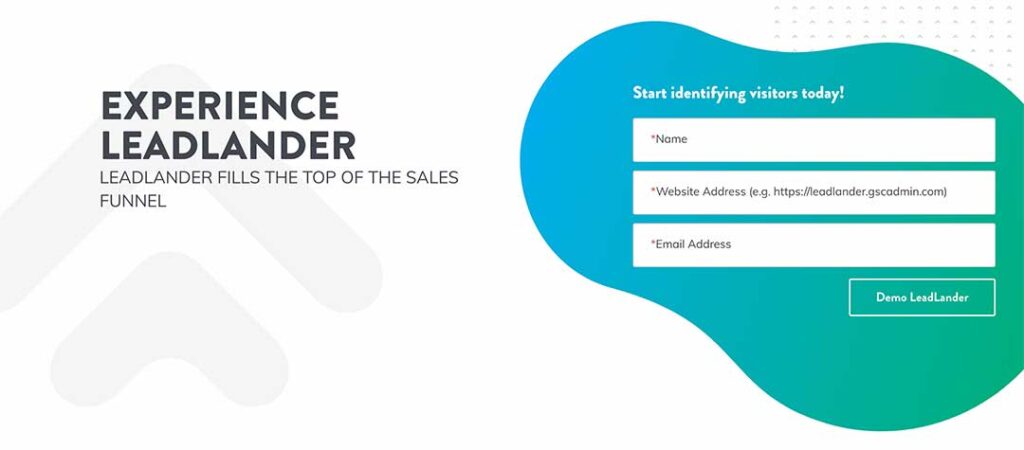Updated February 11, 2022
It would be wonderful if every lead in your pipeline was ready to buy from you immediately. But, sadly, that’s just not the way things work. To hit your sales goals, you need to advertise to and convert cold leads effectively. But what does cold lead advertising look like? And how can you use it to generate hot leads? Keep reading to learn more.
What counts as a cold lead?
Cold leads exist at the top of your sales funnel. They’ve targeted sales leads on your list of potential buyers who haven’t yet shown interest in your product or services.
For example, a credit card company may send you an unsolicited offer for a new credit card even if you’ve never shown any interest in the company. You’re the cold lead in that scenario.
Why do hot leads go cold?
In addition to being a prospect who has never shown any substantial interest in your brand, a cold lead can also be a former hot lead. Maybe a prospect was interacting with your website regularly but hasn’t interacted with you since for months – during that process, they’ve transitioned from hot to cold.
Any number of reasons could account for the occurrence, but here are some of the most common scenarios:
- You lost the business to a competitor
- You didn’t provide a clear outline for the next steps
- The prospect didn’t get the information they needed from you or your website
It’s possible to rewarm a lead that’s run cold. But the best strategy for doing that will depend on what lowered the temperature in the first place.

Why advertising to cold leads matters
Companies have limited budgets for advertising, so you might think those dollars are best spent on the leads likeliest to buy from your company: This isn’t usually a good strategy.
You need a steady stream of new leads coming in to keep your pipeline filled. If you only advertise to hot leads, you’re essentially neglecting the mouth of your sales funnel.
This could lead to a temporary increase in sales. But once your current batch of hot leads is exhausted, there will be fewer new ones to replace them. That means any temporary gains you make will usually offset your eventual decline in sales due to a lack of hot leads.
That’s why most companies would agree that the best strategy is advertising to both cold and hot leads simultaneously. That way, you’re not neglecting any part of your sales funnel, which creates imbalances that can hurt your bottom line down the road.
How to advertise to cold leads
Here are 16 strategies you can use to advertise to cold leads.
Provide value
The way to warm a cold lead up is by getting them to show more of an interest in your company. One way to do that is to provide them with value in exchange for nothing. You could send a cold lead the results of a research study you ran if you think those results would be interesting.
This could establish you as a source of value and encourage the lead’s interactivity with your company. You can then leverage down the line to push them further into your sales funnel.
Focus on relationship-building, not sales
When you have a cold lead, it’s important to resist the hard sell right away. They’re rarely ready to purchase right away, especially if they haven’t interacted with your company or website already.
So your first goal with a cold lead is to forge a relationship. Interact with them on social media or through emails without selling them right away.
Reach out through a new channel
It’s also possible that the channel you’ve been using to reach out to prospects is at least partially to blame for their status. So another idea is to switch things up and contact them through another channel.
Maybe you’ve run PPC ads to a specific group of leads and are getting nowhere with them. Instead of writing that group of leads off entirely, a better strategy may be to target them with an email marketing campaign.
It’s possible that some of the leads in that group don’t like interacting with PPC ads but will be okay with engaging with your emails. It’s worth trying, at the very least.
Use benefit segmentation
Another way to warm cold leads up is by embracing benefit segmentation. This involves splitting your leads into groups based on the benefits you think matter most to them.
Create two groups of cold leads and split them based on whether they place the highest value on affordability or the number of features. That way, you can target them with more precise messaging rather than reaching out to all of your cold leads simultaneously.
Take a closer look at what your cold leads want
It’s worth taking time to re-examine what exactly it is that your cold leads want. The best way to do that is by reaching out to some of them directly and asking. While you may need to offer an incentive to get them to answer your questions, conducting this type of research can give you a clearer understanding of what’s made your ad tactics fall flat.
Try a one-time discount
Incentives are a fantastic way to get people on the fence to commit to purchasing. Offering something like 10% off or a free first month can be enough to get some of your cold leads to take a more serious look at what you have to offer. And at that point, you’ve turned those cold leads warm, which means you can target them in other ways more effectively if they don’t buy right away.
Use referrals
If you’re struggling to grab a cold lead’s attention, reach out to someone they might know and ask for a referral. This can get you in the door with a prospect who hasn’t given you the time of day. And getting that introduction could be all it takes to move that lead to the bottom of your sales funnel.
Create and update a blog
One of the biggest goals of cold lead advertising is getting those leads to engage with your brand. That’s always going to be the first step in the conversion process.
Creating and regularly updating a blog is a great way to make that happen. A cold lead may not find it worth their time to engage with your company at first, but if you start publishing blog posts about issues relevant to their goals, they’re much likelier to visit your website and engage.
Use predictive analytics to gather more insights about what your leads want
The key component to a strong cold lead advertising strategy is clearly understanding exactly what your target audience wants. But that can change depending on multiple factors: The demographic group a lead belongs to, whether they’ve purchased from you in the past, and the industry they’re in.
It can be tough to manage all of these factors with manual segmentation practices. Predictive analytics should give you the information you need to craft more targeted pitches for cold leads. That, in turn, should help you warm up a higher percentage of them.
Focus on personalization
Ultimately, every cold lead is an individual with their own unique set of circumstances. If you want to convert as many of these as possible, you can’t use the same strategy every time.
Embracing personalization can be a huge step in the right direction for warming up your cold leads. There are many ways to approach this. You could segment the emails you send a cold lead based on the pages they’ve looked at on your website in the past. Or you could show different types of ads to cold leads who follow you on different social media platforms.
The key is understanding what makes your cold leads different from one another and then using that to appeal to them in ways that will resonate.
Upgrade your CTAs
If you’re having a tough time warming your cold leads up, it could be because your calls to action (CTAs) need some work. The best CTAs have the following characteristics:
- Copy that aligns with the specific action you want a reader to take
- Optimal placement within the ad – such as at the top of a long-form article instead of the bottom
- Language that fits the audience tone
Additionally, it’s essential to test the performance of different CTAs over time. Doing this consistently is the only precise way to know what works for your company and what doesn’t.
You can A/B test CTAs that are similar to one another. Over time, this will help you zero in on the CTAs that are most effective for your audience.
Measure your results over time
If you’d like to start getting more out of cold lead advertising, you need to measure how effective you are and adopt new strategies along the way.
For example, if you decide to use predictive analytics to appeal to cold leads, you would want to compare your conversion rates before and after the change. Otherwise, you have no measurable way of tracking your progress.
Qualify your cold leads
Lead qualification is the process of identifying which of your leads have the best potential of converting into paying customers the fastest. It’s a process that many companies use to decide the number of resources they should dedicate to warm leads. But lead qualification can also be very effective for warming up cold leads.
Just as there’s variance in how warm leads are, the same is true for cold leads. Meaning you’re going to have a better chance of warming some prospects up than others.
If you can understand which cold leads are warmest, you’ll know where you should be dedicating the bulk of your time and energy. Optimizing how you spend your resources will have a significant impact on how efficiently you’re able to thaw out those cold leads.
Focus on educating
One of the most significant differences between warm and cold leads is the amount, or lack, of expertise they have regarding your product and its perceived benefits. Warm leads tend to understand this already. You just need to convince them that your product is the best fit.
Cold leads often lack this knowledge. They may be unaware of exactly what your product can do for them and why it’s worth investing in.
That’s why the content you share should typically be more educationally focused than sales-focused. It doesn’t make sense to pitch someone on why your product is the best out of a group of similar options if they don’t know why they should be paying for this type of product in the first place.
Agree on the next step
When you get the chance to speak with a cold lead, you want to make sure you’re laying a solid foundation to continue that relationship after the conversation ends.
The most effective way to do this is to develop the next step during the meeting. This could be a follow-up conversation after a certain amount of time has passed, a presentation, or whatever else you two decide on.
The most important thing is to pick the next step and get the prospect to agree to it. That way, you always keep the conversation going – which is the first step towards warming them up and, ultimately, converting them.
Train your staff
It’s also essential to ensure your team knows the right way to interact with cold leads. You could come up with the best strategy in the world, but if your team doesn’t implement it effectively, it just won’t work.
So if you’re not currently where you want to be with cold leads, then putting your staff through cold lead training could be a good move. You might even want to set up an ongoing training plan to ensure they’re always current with the best practices for converting cold leads.

LeadLander makes cold lead advertising a breeze
If you want to get more out of your cold leads, then making a strategic investment in the right technology can help you get there.
LeadLander’s website visitor tracking software gives you a wealth of actionable information about who’s visiting your website. You can use it to identify new leads, validate interest from existing ones, and optimize your web pages, among other things.
With LeadLander, your entire team can access the data it needs to engage and convert cold leads more effectively.
Sign up for a free 14-day trial of LeadLander today.

Related Reading


